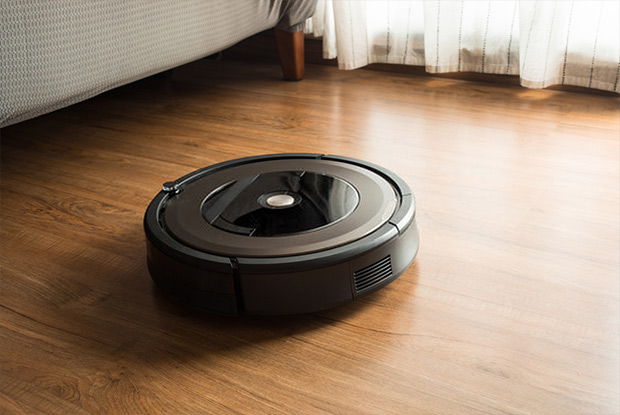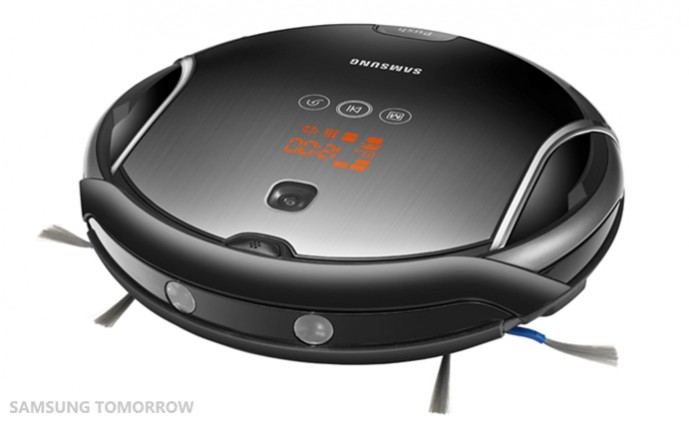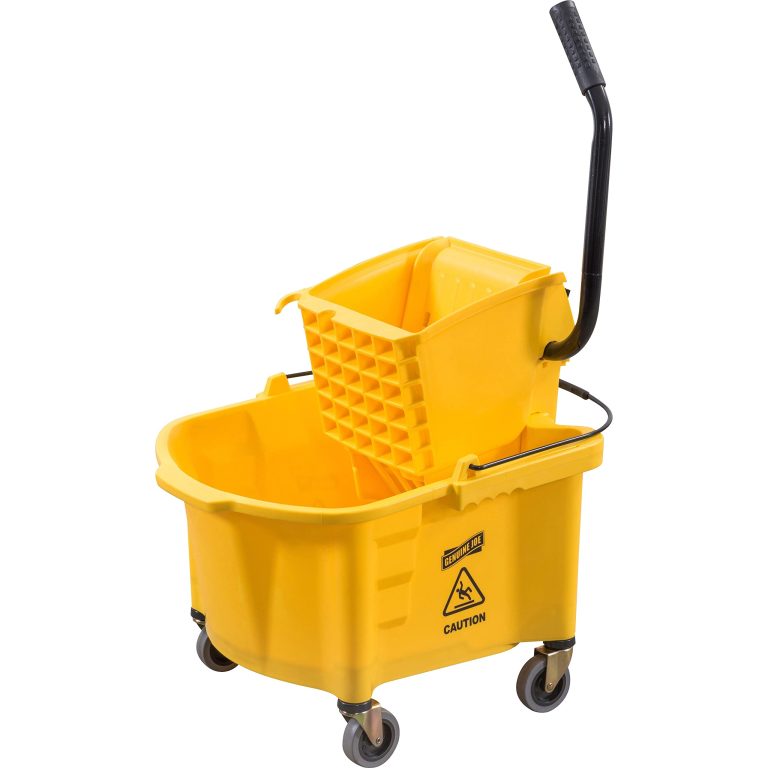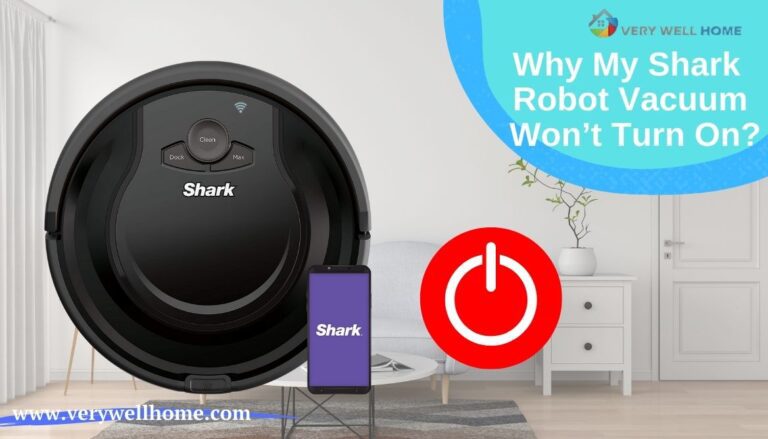Why is My Shark Robot Vacuum Making a Weird Noise?

Your shark robot vacuum may be making a weird noise due to an obstructed brush or a faulty motor.

Credit: howtofixit.net
Understanding The Different Types Of Noises
Has your shark robot vacuum been making strange sounds lately? Don’t worry, weird noises don’t always signify a major issue. In fact, understanding the different types of noises your vacuum makes can help you troubleshoot the problem and potentially avoid unnecessary repairs.
Let’s delve into three common types of noises you may encounter and what they could mean for your vacuum’s performance.
High-Pitched Whirring Noise
- A high-pitched whirring noise from your shark robot vacuum could be an indication of a clogged brushroll or spinning side brush. Check for any debris, threads, or hair entangled in these components.
- If the whirring noise persists even after cleaning the brushroll, there might be a misalignment or damage to the motor. In such cases, it is advisable to contact the shark customer support for further assistance.
- Regular maintenance, including cleaning the brushroll and removing any obstructions, can help prevent this noise from occurring in the future.
Grinding Or Scraping Noise
- If your shark robot vacuum emits a grinding or scraping noise, there may be an issue with the brushroll or the vacuum’s wheels. Ensure that the brushroll is properly attached and free from any blockages.
- Check the wheels for any obstructions or signs of wear and tear. Sometimes, the noise can be caused by foreign objects stuck in the wheels. Remove any debris and see if the noise persists.
- It’s important to remember that excessive wear on the brushroll or wheels can diminish the vacuum’s overall cleaning performance. If the noise continues even after troubleshooting, it might be worth considering a replacement part or professional repair.
Squeaking Or Squealing Noise
- A squeaking or squealing noise is commonly associated with the vacuum’s bearings or belts. Over time, these components can wear out and require replacement.
- Before assuming it’s a major issue, check the vacuum’s filters and ensure they are clean and properly installed. Sometimes, a clogged or improperly fitted filter can cause unusual noises.
- If regular filter maintenance doesn’t resolve the noise, it’s best to contact shark’s customer support for further guidance. They can provide you with the necessary steps to replace worn-out bearings or belts.
Remember, regular maintenance and cleaning are essential for the smooth operation of your shark robot vacuum. By addressing any weird noises early on and following the appropriate troubleshooting steps, you can keep your vacuum running efficiently and extend its lifespan.
Happy cleaning!
Potential Causes Of A High-Pitched Whirring Noise
Is your shark robot vacuum making a weird high-pitched whirring noise? Don’t worry, you’re not alone. Many users have experienced this issue, and there are a few potential causes behind it. In this section, we will explore three common culprits: issues with the motor brushes, belt or pulley problems, and clogged airways or filters.
Let’s delve into each of these possibilities.
Issue With The Motor Brushes:
- The motor brushes are essential components that facilitate the movement of the vacuum cleaner. If they become worn out or damaged, they can produce a high-pitched whirring noise. Here are a few key points to consider:
- Over time, the motor brushes can wear down, resulting in poor contact with the motor’s commutator.
- This poor contact can cause the motor to make a high-pitched whirring noise as it struggles to function properly.
- Inspecting and replacing the motor brushes if necessary can help resolve this issue.
Belt Or Pulley Problem:
- A malfunctioning belt or pulley system can also lead to a high-pitched whirring noise in your shark robot vacuum. Consider the following points:
- Over time, the belt can become loose, worn out, or misaligned, causing it to slip or make unusual noises.
- Similarly, a faulty pulley can disrupt the proper functioning of the belt, resulting in a high-pitched noise.
- Regularly checking the condition of the belt and pulley system and replacing any worn-out components can help eliminate this noise.
Clogged Airways Or Filters:
- Clogs in the airways or filters of your shark robot vacuum can create airflow restrictions, leading to unusual noises. Keep these points in mind:
- Accumulated dirt, debris, or hair can block the airways or filters, disrupting the smooth operation of the vacuum.
- The restricted airflow can generate a high-pitched whirring sound as the motor works harder to overcome the obstruction.
- It is vital to clean or replace the filters regularly and ensure that there are no blockages in the air pathways to prevent this noise.
Remember, identifying the root cause of the high-pitched whirring noise in your shark robot vacuum is crucial in order to address the issue effectively. By considering these potential causes – issues with the motor brushes, belt or pulley problems, and clogged airways or filters – you can troubleshoot and resolve the noise problem, restoring your robot vacuum’s smooth operation.
Troubleshooting Tips For A High-Pitched Whirring Noise
If you’re wondering why your shark robot vacuum is making a weird high-pitched whirring noise, fret not! We’ve got you covered with some troubleshooting tips to help you identify and fix the issue. So, let’s dive right in and get your shark vacuum back to its quiet cleaning glory!
Cleaning Or Replacing The Motor Brushes:
- Over time, the motor brushes in your shark robot vacuum may gather dust, debris, or wear out, resulting in a high-pitched whirring noise. Here’s what you can do:
- Remove the main brush roll and inspect the motor brushes for any dirt or damage.
- Gently clean the brushes using a soft brush or cloth to remove any accumulated debris.
- If the brushes are worn out or damaged, it’s time to replace them with new ones. Contact the manufacturer or check their website for compatible replacement parts.
Inspecting And Replacing The Belt Or Pulley:
- A high-pitched whirring noise could also be due to a faulty belt or pulley system in your shark robot vacuum. Here’s how you can troubleshoot this issue:
- Remove the main brush roll compartment cover to access the belt and pulley.
- Inspect the belt for any signs of wear, fraying, or stretching. If you notice any damage, it’s time for a replacement.
- Similarly, check the pulley system for any loose or damaged components. Tighten or replace them as necessary for optimal performance.
Checking And Cleaning The Airways And Filters:
- Clogged airways and dirty filters can also lead to a high-pitched whirring noise in your shark robot vacuum. Follow these steps to ensure unobstructed airflow:
- Turn off and unplug the vacuum before proceeding.
- Remove the dustbin and empty any accumulated debris.
- Clean or replace the filters according to the manufacturer’s instructions.
- Use a brush or compressed air to remove any dust or blockages from the airways, both in the dustbin compartment and the main body of the vacuum.
Tightening Or Replacing Loose Or Damaged Fan Blades:
- If your shark robot vacuum continues to make a high-pitched whirring noise, it’s essential to inspect the fan blades for any issues. Follow these steps to troubleshoot:
- Remove the main brush roll compartment cover and locate the fan blades.
- Check for any loose or damaged blades that may be causing the noise.
- Tighten any loose blades using the appropriate tools or replace them if necessary.
Remember, regular maintenance and cleaning of your shark robot vacuum will help prevent such issues from occurring in the future. By following these troubleshooting tips, you can enjoy the quiet, efficient performance of your shark vacuum once again!
Potential Causes Of A Grinding Or Scraping Noise
Has your shark robot vacuum been making an unusual grinding or scraping noise lately? If so, there could be a few different reasons for this annoying sound. Don’t worry, we’re here to help you troubleshoot the issue. Let’s take a look at some potential causes and what you can do about them.
Debris Or Foreign Objects Stuck In The Brushroll:
- Dirt, hair, or other debris can get tangled in the brushroll, causing it to make a grinding or scraping noise.
- Check the brushroll and remove any obstructions that you find.
- Use a pair of scissors or a small tool to carefully cut or pull out any tangled hair or strings.
- Regularly clean the brushroll to prevent future build-up of debris.
Worn-Out Or Damaged Brushroll:
- Over time, the brushroll can become worn-out or damaged, which can lead to a grinding noise.
- Inspect the brushroll for any signs of wear such as frayed bristles or loose parts.
- If you notice any damage, it’s best to replace the brushroll with a new one.
- Refer to the user manual or contact shark customer support for guidance on purchasing a compatible replacement brushroll.
Misaligned Or Damaged Suction Fan:
- The suction fan in your shark robot vacuum may become misaligned or damaged, causing a scraping noise.
- Examine the suction fan carefully for any signs of misalignment or visible damage.
- If the fan is misaligned, gently reposition it back into place.
- In the case of a damaged fan, it’s recommended to contact shark customer support for further assistance and possible repair options.
Loose Or Damaged Gears Or Bearings:
- Loose or damaged gears or bearings can also be the culprit behind the grinding or scraping noise.
- Check the vacuum’s internal components for any signs of damage or looseness.
- If you spot any issues, it’s best to reach out to shark customer support or consult a professional technician for repairs.
- Attempting to fix these complex parts without the proper knowledge may cause further damage to your robot vacuum.
Remember, it’s important to address any strange noises from your shark robot vacuum promptly to prevent potential damage and ensure its optimal performance. By following these troubleshooting steps and seeking assistance if needed, you’ll be back to enjoying a quiet and efficient cleaning experience in no time.
Troubleshooting Tips For A Grinding Or Scraping Noise
Is your shark robot vacuum making an unpleasant grinding or scraping noise? Don’t worry, we’ve got you covered! Here are some troubleshooting tips to help you identify and resolve the issue.
Removing Any Debris Or Foreign Objects From The Brushroll
If your shark robot vacuum is making a grinding or scraping noise, the first thing to check is the brushroll. Over time, debris such as hair, strings, or other foreign objects can get tangled around it, causing the noise. Follow these steps to resolve the issue:
- Turn off the vacuum and unplug it from the power source.
- Locate the brushroll compartment, usually at the bottom of the vacuum.
- Carefully remove the brushroll from its housing.
- Inspect the brushroll for any tangled debris or objects.
- Use a pair of scissors or tweezers to gently remove the debris.
- Once the brushroll is clear, reinsert it back into the housing, making sure it is properly aligned.
- Plug the vacuum back in and test it to see if the noise has resolved.
Replacing The Worn-Out Or Damaged Brushroll
If removing debris from the brushroll does not fix the grinding or scraping noise, it may be time to replace the brushroll. Over time, the bristles on the brushroll can become worn or damaged, causing the noise. Follow these steps to replace the brushroll:
- Refer to your shark robot vacuum’s user manual to find the correct replacement brushroll.
- Turn off the vacuum and unplug it from the power source.
- Locate the brushroll compartment, usually at the bottom of the vacuum.
- Remove the brushroll from its housing, as mentioned previously.
- Carefully remove the worn-out or damaged brushroll from the housing.
- Insert the new brushroll into the housing, making sure it is properly aligned.
- Reinsert the brushroll back into the vacuum.
- Plug the vacuum back in and test it to see if the noise has resolved.
Inspecting And Realigning The Suction Fan
Sometimes, the grinding or scraping noise may originate from the suction fan. To inspect and realign the suction fan, follow these steps:
- Turn off the vacuum and unplug it from the power source.
- Locate the suction fan area, usually located near the brushroll compartment.
- Carefully remove any debris or foreign objects that may be stuck around the suction fan.
- Check if the suction fan is properly aligned. If it appears misaligned, gently adjust it back into place.
- Plug the vacuum back in and test it to see if the noise has resolved.
Tightening Or Replacing Loose Or Damaged Gears Or Bearings
If none of the above steps have resolved the grinding or scraping noise, it is possible that the issue lies with loose or damaged gears or bearings. Follow these steps to tighten or replace them:
- Refer to your shark robot vacuum’s user manual for guidance on locating the gears or bearings.
- Turn off the vacuum and unplug it from the power source.
- Carefully inspect the gears and bearings for any signs of damage or looseness.
- Use the appropriate tools to tighten any loose gears or bearings. If they are damaged, refer to the user manual for replacement instructions.
- Once the gears or bearings have been tightened or replaced, plug the vacuum back in and test it to see if the noise has resolved.
By following these troubleshooting tips, you can identify and resolve the grinding or scraping noise issues with your shark robot vacuum. Remember to always refer to your user manual for specific instructions related to your model. Happy vacuuming!
Potential Causes Of A Squeaking Or Squealing Noise
Is your shark robot vacuum making a weird noise? Don’t panic just yet! Strange noises coming from your vacuum can be quite common and are usually indicative of a fixable issue. In this section, we will explore the potential causes of a squeaking or squealing noise and provide some solutions to get your shark robot vacuum back on track.
Loose Or Worn-Out Drive Belt
One possible cause of a squeaking or squealing noise in your shark robot vacuum is a loose or worn-out drive belt. The drive belt is responsible for spinning the brushes and if it is loose or damaged, it can result in unusual noises.
Consider the following:
- Inspect the drive belt for any signs of wear and tear such as fraying or stretching.
- Check if the belt is properly attached and tightened. If it is loose, you may need to readjust or replace it.
- Lubricate the belt with silicone spray to reduce friction and eliminate the noise.
Misaligned Or Damaged Roller Or Wheel
Another potential culprit for the odd noise is a misaligned or damaged roller or wheel. When these components are not in their proper position or are worn out, they can create squeaking or squealing sounds. Consider the following:
- Examine the rollers and wheels for any signs of misalignment or damage, such as bent or broken parts.
- Remove any debris or tangled hair from the rollers and wheels, as it can contribute to the noise.
- Realign or replace the affected components, ensuring they are fitted securely in their designated places.
Loose Or Damaged Components In The Brushroll Motor
The brushroll motor plays a crucial role in your shark robot vacuum’s cleaning efficiency. If there are loose or damaged components within the motor, it can result in unusual noises. Consider the following:
- Carefully inspect the brushroll motor for any loose or broken parts.
- Tighten any loose screws or connections within the motor.
- If you discover any damaged components, such as a cracked casing or a faulty motor, consider seeking professional assistance or contacting shark customer support for guidance.
Issue With The Vacuum’S Bearings Or Axles
Lastly, an issue with the vacuum’s bearings or axles can also be a potential cause of the strange noise. When these parts become worn out or damaged, they can create squeaks or squeals during operation. Consider the following:
- Check the bearings and axles for any signs of wear, such as rust or excessive play.
- Lubricate the bearings and axles with a suitable lubricant to reduce friction and minimize noise.
- If the issue persists, it may be necessary to replace the faulty parts.
By understanding these potential causes of a squeaking or squealing noise in your shark robot vacuum, you can successfully troubleshoot and resolve the issue. Remember to pay close attention to your vacuum’s components, inspect them regularly, and perform any necessary maintenance or repairs.
Happy vacuuming without any weird noises!
Troubleshooting Tips For A Squeaking Or Squealing Noise
Is your shark robot vacuum making a strange noise that’s driving you crazy? Don’t fret, because we’re here to help you troubleshoot and fix the issue. In this section, we’ll explore some common causes of a squeaking or squealing noise coming from your vacuum, and provide you with easy-to-follow tips to resolve the problem.
Replacing The Loose Or Worn-Out Drive Belt:
- Check the drive belt located on the underside of the vacuum. If it appears loose or worn out, it may be causing the noise.
- To replace the drive belt, start by removing the brushroll cover. Then, take out the old belt and replace it with a new one that is compatible with your model.
- Ensure that the new belt is properly installed and tightened. This should eliminate any squeaking noises caused by a loose or worn-out drive belt.
Inspecting And Realigning The Roller Or Wheel:
- Examine the roller or wheel of your shark robot vacuum for any debris or obstructions that might be causing the noise.
- If you find any buildup of dirt, hair, or other materials, clean it thoroughly to ensure smooth operation.
- Additionally, make sure that the roller or wheel is properly aligned. Misalignment could cause unnecessary friction and result in squeaking or squealing sounds.
Fixing Or Replacing Components In The Brushroll Motor:
- The brushroll motor plays a crucial role in the functionality of your shark robot vacuum. If this component is damaged or malfunctioning, it can cause strange noises.
- Inspect the brushroll motor for any visible signs of damage or wear and tear. If you notice any issues, such as broken or loose parts, consider fixing or replacing the components to resolve the noise problem.
Lubricating Or Replacing The Vacuum’S Bearings Or Axles:
- Over time, the bearings or axles in your shark robot vacuum may become dry or worn out, resulting in squeaky operation.
- To address this issue, try lubricating the bearings or axles with a suitable lubricant. Follow the manufacturer’s instructions for the best results.
- If lubrication doesn’t resolve the noise, it may be necessary to replace the bearings or axles. Consult your vacuum’s user manual or contact the manufacturer for guidance on replacement procedures.
By following these troubleshooting tips, you should be able to identify and address the reasons behind the weird noises your shark robot vacuum is making. Remember to always refer to your vacuum’s user manual for model-specific instructions or contact customer support if you need further assistance.
Tips For Preventing And Maintaining A Noise-Free Shark Robot Vacuum
Is your shark robot vacuum making strange noises? A noisy vacuum can be annoying and may indicate underlying issues. But don’t worry, there are simple steps you can take to prevent and maintain a noise-free shark robot vacuum. By following these tips, you can ensure optimal performance and a quieter cleaning experience.
Regularly Clean And Maintain The Vacuum For Optimal Performance
Keeping your shark robot vacuum clean and well-maintained is crucial for its optimal performance. Here are some key points to remember:
- Empty the dustbin regularly: A full dustbin can lead to clogs and reduced suction power, causing your vacuum to make noise. Emptying it regularly will help maintain a noise-free operation.
- Clean the brushroll: Remove any hair or debris that may have wrapped around the brushroll. A clean brushroll ensures smooth movement and prevents loud noises while vacuuming.
- Check the wheels: Inspect the wheels for any dirt, hair, or debris that may be stuck. Clean them thoroughly to ensure they move freely and silently across your floors.
- Lubricate moving parts: Over time, the movable parts of your robot vacuum may start squeaking or making noises. Applying a silicone-based lubricant can help reduce friction and noise.
Check For Any Loose Or Damaged Parts Before Starting The Vacuum
Before starting your shark robot vacuum, make sure all parts are secure and in good condition. Here’s what you should do:
- Inspect the brushes: Ensure the side brushes and main brush are tightly secured. Loose brushes can cause rattling noises or may even get dislodged during cleaning.
- Tighten screws and connections: Check for loose screws or connections, particularly around the dustbin, brushroll, and battery compartment. Tighten them if necessary to eliminate any potential noise sources.
- Examine the sensors: Ensure that all sensors, such as cliff sensors or anti-collision sensors, are clean and undamaged. Dirt or damage to these sensors can affect their functionality and result in unusual noises.
Keep The Vacuum’S Brushroll And Filters Clean To Prevent Clogs
Clogs in your shark robot vacuum can lead to increased noise levels and reduced efficiency. Follow these steps to maintain a clog-free vacuum:
- Clean the brushroll regularly: Remove tangled hair or debris from the brushroll to prevent it from becoming jammed. A clean brushroll prevents clogs that can result in excessive noise.
- Wash or replace filters: Dirty filters can obstruct airflow, causing the vacuum to work harder and create more noise. Clean or replace filters as recommended by the manufacturer to prevent clogs and maintain a quiet operation.
- Clear blockages in the suction path: Check the vacuum’s suction path for any blockages caused by large debris or clogs. Removing these obstructions will not only prevent noise but also improve overall performance.
Follow The Manufacturer’S Maintenance Guidelines For Proper Care
To ensure your shark robot vacuum remains in top-notch condition and operates quietly, it’s essential to adhere to the manufacturer’s maintenance guidelines. These guidelines may include specific instructions regarding cleaning, filter replacement, and overall care. By following these recommendations, you can prevent potential issues that may result in unwanted noises.
Remember, regular maintenance and proper care are crucial for the longevity and noise-free operation of your shark robot vacuum. By implementing the tips mentioned above, you can enjoy an efficient and quiet cleaning experience while prolonging the life of your vacuum.
Frequently Asked Questions On Why Is My Shark Robot Vacuum Making A Weird Noise
Why Is My Shark Robot Vacuum Making A Weird Noise?
– this could be due to a loose part or debris stuck in the vacuum’s brush roller. – the noise could also be caused by a fault in the motor or suction system. – it’s important to check for any obstructions or damaged parts and clean or replace as necessary.
– if the issue persists, contacting shark customer support for troubleshooting assistance is recommended. – regular maintenance and cleaning can help prevent strange noises and prolong the lifespan of your vacuum.
Conclusion
Strange noises from your Shark Robot Vacuum usually hint at maintenance needs or minor issues. Regular cleaning, proper use, and timely troubleshooting can effectively address these sounds. Remember, these noises are your vacuum’s way of communicating. Paying attention to them not only ensures smoother operation but also enhances the longevity of your device. Stay attentive to your vacuum’s sounds for a noise-free and efficient cleaning experience.



